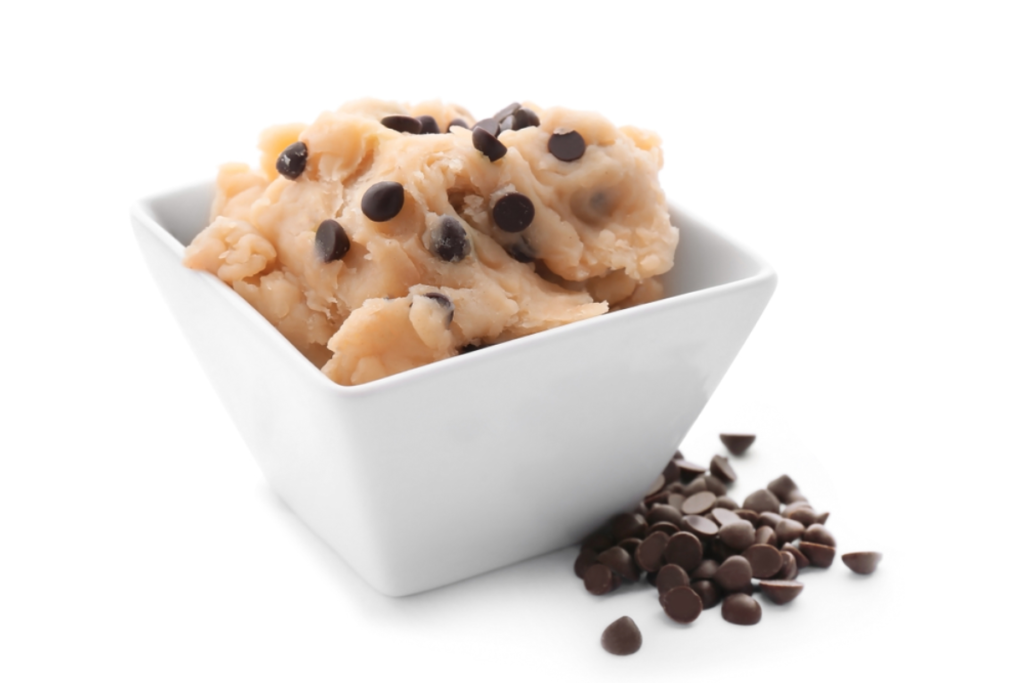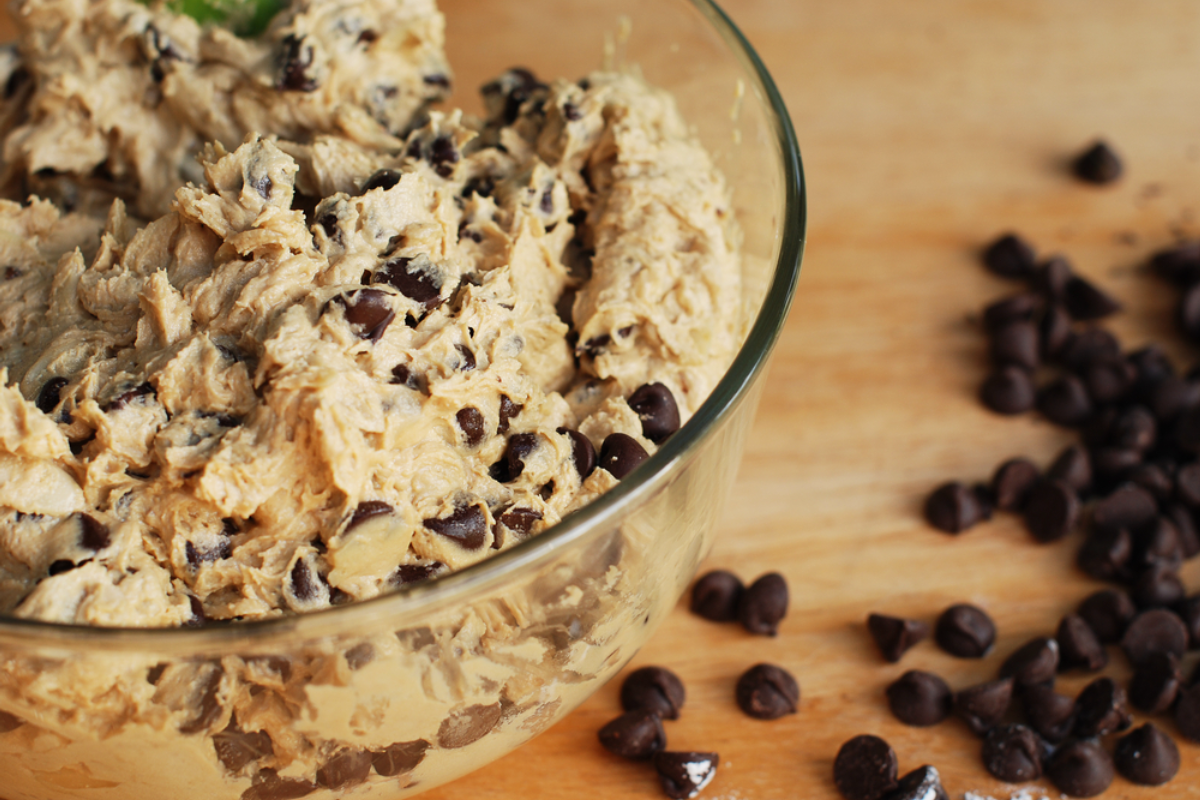Cookie dough is the foundation of countless classic treats—from chocolate chip cookies to sugar cookies, and everything in between. But have you ever wondered what makes cookie dough so special? How do a few simple ingredients combine to create a dough that bakes into soft, chewy, or crisp cookies?
This guide will dive deep into the art of making cookie dough, exploring the essential ingredients, the science behind them, and techniques to get the perfect result every time. Whether you’re a novice baker or an experienced one, understanding how cookie dough works will elevate your baking game to new heights.

Key Ingredients: The Building Blocks of Cookie Dough
Understanding what makes cookie dough begins with its core ingredients. Each ingredient serves a vital function, contributing to texture, flavor, and structure. Let’s break down the main components that create this delicious dough.
1. Flour
Flour is the structural backbone of cookie dough. All-purpose flour is most commonly used because it provides a balanced protein content, which helps the dough form a strong structure while still being soft. The gluten development in flour is what allows the dough to hold together and bake into a chewy or crisp cookie.
The amount of flour you use can greatly affect the outcome of your dough. More flour will create a thicker, more structured dough, leading to cakier cookies. Less flour, on the other hand, results in cookies that are thin and chewy.
2. Sugar
Sugar doesn’t just add sweetness—it plays a huge role in the texture of your cookies. Typically, a mix of granulated sugar and brown sugar is used, and each contributes differently to the dough.
- Granulated Sugar: Provides sweetness and helps the cookies spread during baking. It also contributes to a slightly crisp texture.
- Brown Sugar: Contains molasses, which adds moisture, richness, and a chewy texture. Brown sugar is often used in recipes that call for soft cookies, like chocolate chip cookies.
3. Butter
Butter is a crucial ingredient in what makes cookie dough so rich and flavorful. Not only does it add moisture, but it also contributes to the cookies’ texture and spread as they bake. Creaming butter with sugar incorporates air into the dough, creating a tender, light cookie.
Unsalted butter is preferred because it allows you to control the salt level in the dough. Using softened butter ensures that it blends smoothly with the other ingredients, creating the perfect creamy base for your dough.
4. Eggs
Eggs provide moisture and help bind the ingredients together. They also contribute to the texture—adding richness and helping the dough rise. The egg yolk adds fat and flavor, while the egg white provides structure, ensuring the cookies hold their shape while baking.
5. Leavening Agents
Leavening agents like baking soda and baking powder are essential for giving the dough its rise.
- Baking Soda: Reacts with the acidic ingredients in the dough (such as brown sugar) to produce carbon dioxide gas, which helps the cookies rise and spread.
- Baking Powder: Contains both an acid and a base, which provides a more consistent rise, making it perfect for thicker, cakier cookies.
6. Salt
Salt might seem like a small addition, but it’s essential to balance the sweetness and enhance the overall flavor of the cookie dough. A pinch of salt makes all the difference between bland and delicious.
How the Ingredients Work Together
Now that we’ve explored the key ingredients, it’s time to see how they all come together. Each plays a specific role in creating the texture and flavor of cookie dough. When the right balance is struck, the result is a dough that bakes into soft, chewy, or crispy cookies, depending on what you’re aiming for.
For instance, using more butter and brown sugar will give you a soft and chewy texture, while increasing the flour or granulated sugar will make the cookies crispier. This interplay of ingredients is at the heart of what makes cookie dough work so well.
The Science Behind Cookie Dough
Baking is often described as a science, and cookie dough is no exception. While the ingredients themselves are simple, the way they interact with one another determines the final product.
The Role of Gluten
When flour and water mix, gluten forms. In cookie dough, the development of gluten helps give structure to the dough. The more you mix, the more gluten develops, which can lead to tougher cookies. For this reason, it’s important not to overmix your dough once the flour is added.
Fat and Sugar’s Impact
Fat (from butter or shortening) adds richness to the dough, while sugar helps with spreading and browning. Sugar caramelizes as the cookies bake, which is why cookies turn golden brown. Additionally, sugar attracts moisture, which keeps cookies soft.
This balance of fat and sugar is key to creating cookie dough that bakes into perfectly textured cookies.
Chilling the Dough: A Secret to Success
Many cookie recipes call for chilling the dough before baking. But what makes cookie dough better when chilled?
Chilling the dough allows the butter to firm up, which helps control the spread of the cookies. It also allows the flavors to develop, giving you a richer, more complex taste. By chilling the dough for at least 30 minutes—or even overnight—you’ll end up with thicker, chewier cookies that hold their shape better in the oven.
Step-by-Step Guide: How to Make Cookie Dough
Let’s walk through the process of making cookie dough from scratch. This method works for most types of cookies, whether you’re making chocolate chip, sugar, or peanut butter cookies.
Step 1: Cream the Butter and Sugar
Start by creaming the butter and sugar together. Use a hand mixer or stand mixer on medium speed to beat softened butter with both granulated and brown sugar until the mixture is light and fluffy. This process should take about 3-5 minutes.
Creaming the butter and sugar helps to incorporate air into the dough, resulting in light and tender cookies.
Step 2: Add the Eggs and Vanilla
Next, add the eggs one at a time, beating well after each addition. Mix in the vanilla extract. The eggs help bind the ingredients together and give the dough its structure.
Step 3: Combine the Dry Ingredients
In a separate bowl, whisk together the flour, baking soda (or baking powder), and salt. Gradually add the dry ingredients to the wet ingredients, mixing on low speed until just combined. Be careful not to overmix, as this can result in tough cookies.
Step 4: Fold in Mix-Ins
If you’re making cookies with add-ins (like chocolate chips, nuts, or dried fruit), now’s the time to fold them into the dough. Gently stir them in with a spatula, ensuring they are evenly distributed throughout the dough.
Baking Cookie Dough to Perfection
Once your dough is prepared, it’s time to bake! Here’s how to ensure your cookies come out perfectly every time.
Step 1: Preheat the Oven
Always preheat your oven to the temperature specified in your recipe. Most cookie recipes bake at around 350°F (175°C), but check your recipe to be sure. Preheating ensures that your cookies bake evenly and start to rise as soon as they hit the heat.
Step 2: Roll or Scoop the Dough
For evenly sized cookies, use a cookie scoop or tablespoon to portion out the dough. Roll the dough into balls if necessary, or flatten them slightly if you prefer thinner cookies.
Step 3: Bake Until Golden
Bake the cookies until the edges are golden brown, but the centers are still slightly soft. For chewy cookies, pull them from the oven a minute or two before they look fully done, as they will continue to bake on the hot baking sheet.
Fun Variations: Customize Your Cookie Dough
One of the best parts about understanding what makes cookie dough is that you can easily customize it. Once you’ve mastered the basics, try experimenting with new flavors and mix-ins.
1. Chocolate Chip Cookie Dough
Add your favorite type of chocolate chips—whether semi-sweet, dark, or milk chocolate—for the classic chocolate chip cookie.
2. Oatmeal Cookie Dough
For a hearty twist, add rolled oats to your dough. Oatmeal cookies are chewy and have a nutty flavor that pairs perfectly with raisins or chocolate chips.
3. Peanut Butter Cookie Dough
Swap out some of the butter for peanut butter to create a rich, nutty dough. Peanut butter cookies are a favorite, especially when topped with a crisscross pattern from a fork before baking.
4. Sugar Cookie Dough
Sugar cookie dough is perfect for rolling out and cutting into shapes. It’s a versatile dough that you can decorate with icing or sprinkles once baked.
Troubleshooting Cookie Dough Problems
Even seasoned bakers run into trouble with their dough from time to time. Here are some common cookie dough issues and how to fix them.
1. Dough Too Sticky
If your dough is too sticky to handle, try chilling it for 30 minutes. This will firm up the butter and make the dough easier to work with.
2. Cookies Spread Too Much
If your cookies are spreading too much, it could be due to butter that’s too warm. Chilling the dough before baking will help prevent excess spreading.
3. Cookies Too Hard
If your cookies come out too hard, it could be because they were overbaked or the dough was overmixed. Be sure to mix just until the flour is incorporated and keep an eye on your bake time.
Conclusion: What Makes Cookie Dough So Special?
In the end, what makes cookie dough perfect is a combination of quality ingredients, careful technique, and attention to detail. Whether you prefer your cookies soft and chewy or crisp and crunchy, mastering the basics of cookie dough will give you the tools to create your ideal cookie every time.
From the way butter and sugar are creamed to how flour and eggs work together, understanding the science behind cookie dough unlocks endless possibilities for creating delicious treats. Now that you’ve got a handle on the essentials, it’s time to start baking. Gather your ingredients, follow the steps, and enjoy the sweet rewards of homemade cookies!
